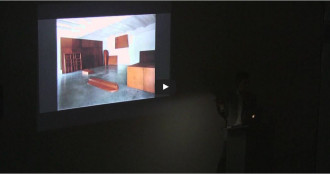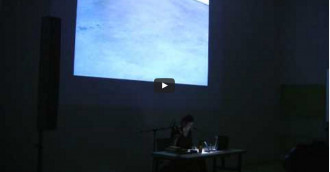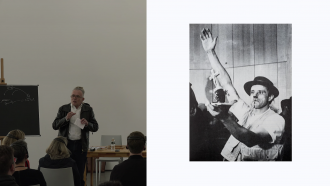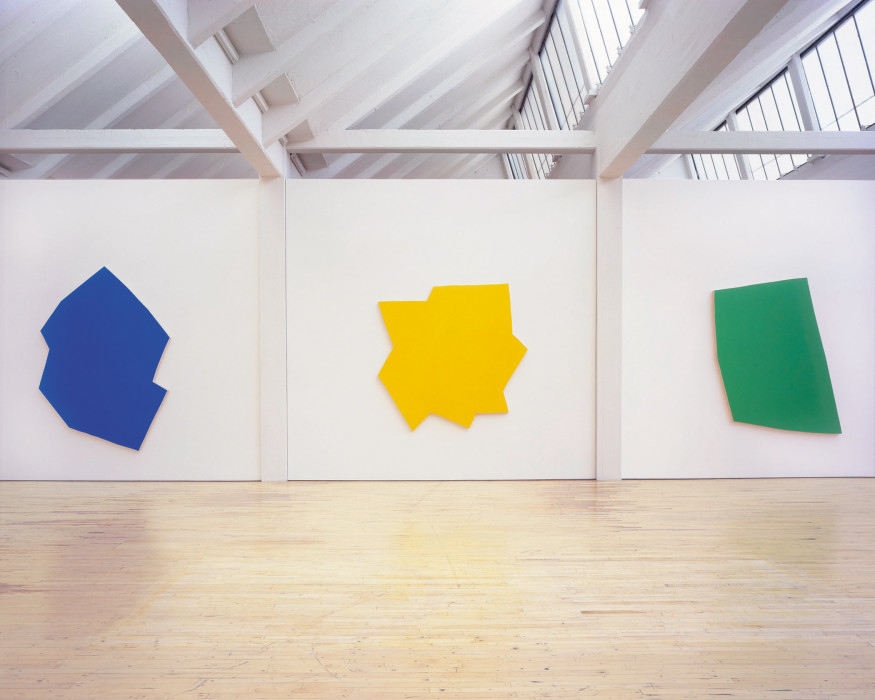Imi Knoebel, 24 Colors—for Blinky, 1977
May 17, 2008–March 24, 2014, Dia Beacon
Overview
Imi Knoebel’s work of the 1960s and 1970s expose his preoccupation with questions of presentation and installation. Rejecting the use of metaphor and allusion in art, Knoebel focuses on a strictly pragmatic investigation of the formal properties and protocols of the exhibition space, as well as structures for the installation and viewing of his work. Focused on eliciting an abstract, generic condition in art, Knoebel reduces his works to explorations on form, material, surface, space, and support. Knoebel’s installation works are variously arranged depending on the context. Since no fixed set of relationships binds the components in his works, the parts can expand to an environmental scale or be densely compacted as it would be in storage. The ensemble is permutable, and its particular configuration, dimensions, and internal relations are dependent on the artist’s decisions in situ. For Knoebel, form becomes an event and emphasis in the re-situating of the work shifts to its staging.
An early showing for Knoebel in New York, the exhibition at Dia presented four of Knoebel’s large-scale works, two of which were from Dia’s permanent collection. Knoebel’s Raum 19 (Room 19, 1968) is on long-term view at Dia:Beacon.
The restoration and presentation of Imi Knoebel’s 24 Colors—for Blinky is made possible through the generous support of Gucci. As part of the company’s larger initiative to make possible the preservation of significant artworks, Gucci has made a multi-year commitment to Dia’s conservation initiatives.
24 Farben-für Blinky (24 Colors—for Blinky) was executed in 1977, shortly after the untimely death of Imi Knoebel's close friend, the German painter Blinky Palermo (whose work is also on view at Dia:Beacon). For Knoebel, this moment proved significant. Personal loss was experienced in the form of artistic legacy: a bequest from a peer renowned for his gifts as a colorist. Yet, up to that moment, Knoebel had, in contrast to his friend, strictly confined his palette to white and black monochrome fields or, more often, as seen in Raum 19 (Room 19), 1968 (also on view at Dia:Beacon), depended on the warm natural hues of Masonite. Indeed, Knoebel's fascination with Masonite board had meant that for the first decade of his career, he was more often considered a sculptor than a painter proper.Raum 19 was, like all his works at that time, conceived in materialist terms. The fundamentals of both sculpture and painting comprise its formal language: planar surfaces, supports and stretchers to be stored or stacked, volumetric solids and plastic geometric elements. Tellingly, those features more commonly associated with the pictorial aspects of painting-illusionistic space and the disposition of colored shapes across a flat field-are absent.
When adopting color for the first time in 1977, Knoebel steadfastly held to his materialist aesthetic. Each component in this epic series is a monochrome polygon. Eschewing familiar geometric shapes, such as rectangles, squares, rhomboids, or trapezoids, Knoebel has conceived each complex form as a unique entity that defies easy identification. Similarly, while each hue is indubitably specific, the collective effect exceeds what can be readily remembered; the result is that in this series color is not used conventionally. Less an expressive or referential device, it assumes an abstract character, which in its polyphony comes to signify color tout court. In these and related ways, Knoebel at once extended his ongoing elliptical investigation into the identity of painting and, for the first time, embraced what is traditionally considered its quintessential feature-color-at its most vital and intense.
Exhibited in Heiner Friedrich's gallery in Cologne shortly after it was completed, Knoebel's monumental painting in twenty-one parts entered the collection of Dia Art Foundation shortly thereafter. Recently restored, it is presented for the first time in North America at Dia:Beacon, where the artist himself installed the work, determining the sequence and relation of the parts in response to the site. While this monumental cycle was generated in part in homage to a deceased friend, it nonetheless proved seminal for the artist: it has become the fountainhead in an ongoing investigation that today spans more than thirty years into the multifarious and complex roles color may assume in a contemporary practice.
Artist
Imi Knoebel
Imi Knoebel was born in Dessau, Germany, in 1940. He lives and works in Düsseldorf.
Explore
Daniel Lefcourt on Imi Knoebel
Move to Daniel Lefcourt on Imi Knoebel pageHelen Mirra on Imi Knoebel's Raum 19
Move to Helen Mirra on Imi Knoebel's Raum 19 page
Daniel Lefcourt on Imi Knoebel
Move to Daniel Lefcourt on Imi Knoebel page
Helen Mirra on Imi Knoebel's Raum 19
Move to Helen Mirra on Imi Knoebel's Raum 19 page
